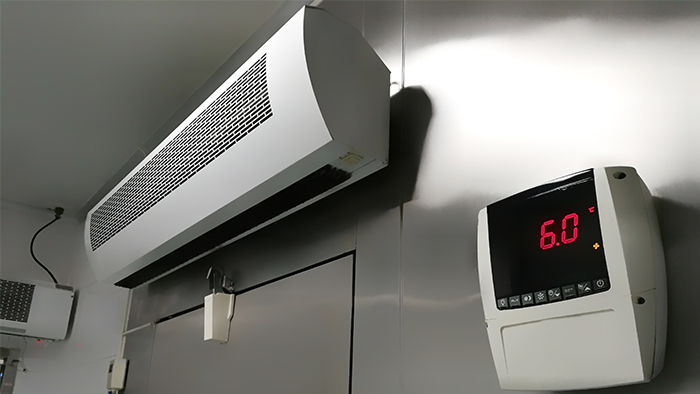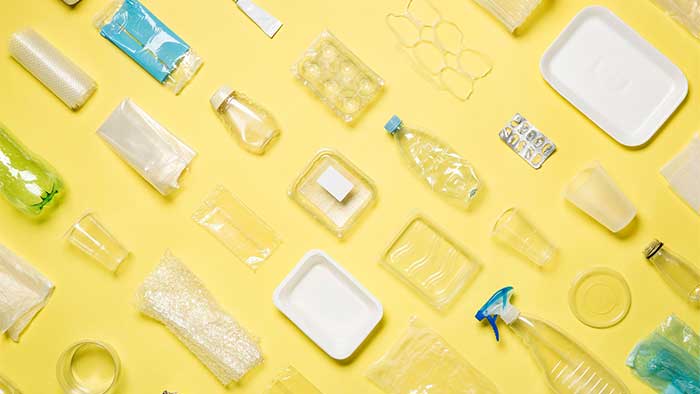Grocery
This area covers grocery store operations, which include the sale of food products, fresh produce, meat, deli, household cleaning supplies, health and beauty products, and other household products. The primary compliance areas include waste (food waste, hazardous waste, solid waste, recycling, and wastewater) and air emissions. Store operations such as cleaning, maintenance, and refrigerant management are covered in the RCC Store Operations page. (Note that this page is only focused on environmental issues and does not cover the many federal, state, and local requirements concerning food safety, handling, labeling, and transportation.)
COMPLIANCE CONSIDERATIONS
Grocery operations are regulated by multiple agencies, including: U.S. Environmental Protection Agency (EPA), U.S. Department of Transportation (DOT), Occupational Safety and Health Administration (OSHA), State environmental agencies, and even potentially the Local Publicly Owned Treatment Works (POTW).
Food Waste and Food Packaging Requirements
Mandatory Recycling and Disposal Bans
View Fact SheetA potentially significant environmental issue from retail grocery is food waste and food packaging, which is considered municipal solid waste. Food waste is generally regulated at state and local levels. Some states and municipalities require businesses and institutions that generate large amounts of food waste to compost the waste rather than to send it to landfills. One reason for this is that decomposing food and organic waste in landfills releases methane gas, a greenhouse gas that contributes to global warming. The RCC's Mandatory Organics Recycling Regulations Fact Sheet has more information on state programs, particularly California.
There may also be local and municipal ordinances restricting the use of polystyrene containers.
The RCC's Other Regulated Waste page has more information on different waste types that may be generated at grocery stores.
Solid Waste Management
State and local governments have the primary regulatory authority over solid waste or non-hazardous trash from retail businesses. Many jurisdictions ban businesses from sending certain types of material to landfills, such as recyclables and electronic waste. The bans are often designed to encourage recycling as well as to keep hazardous material out of landfills. States may also have bottle deposit laws. For more information on solid waste, visit RCC's Other Regulated Waste page.
Air Emissions and Refrigerants

Refrigeration, air conditioning (A/C), and refrigerated transportation use refrigerants that may contain Class I ozone-depleting substances (ODS), such as chlorofluorocarbons (CFCs), or Class II ODSs, hydrochlorofluorocarbons (HCFCs). Class I substances, including CFCs, have been phased out in the United States, with a few exceptions. New production and import of most HCFCs were phased out as of 2020. Recent changes to the regulations expanded requirements to cover additional ODS substitutes. To control emissions of these substances, the Clean Air Act has regulatory requirements that apply to retailers who have large refrigerators/freezers, air conditioning units, or refrigerated transportation. Anhydrous ammonia is another common refrigerant used in some large cold storage facilities and subject to regulation by EPA's emergency notification laws and OSHA. The RCC’s Air Regulations Page and Refrigerant Fact Sheet have more information.
Cooking can cause emissions, including odors and smoke, which are generally regulated at state and local levels. Most states have regulations on the opacity or the transparency of the smoke from roof exhaust stacks (for example, opacity cannot exceed 20%). If smoke or odors are a potential nuisance to neighbors, catalytic converters or other scrubbing technology can reduce emissions. Charbroilers may be covered by additional requirements in certain jurisdictions, such as local districts in California (for example, the Bay Area Air Quality Management District). In addition, commercial bakery ovens may emit volatile organic compounds (VOCs) and could require a state and/or local permit.
Emergency generators are also regulated to control air emissions, and are covered on the RCC Emergency Generator Fact Sheet and Matrix of Emergency Generator Permitting options by state.
Emergency Generator Permitting Matrix
State-by-state summary of permitting options and exemptions for emergency generators, including general permits and construction operation permits.
Read MoreRefrigerant Fact Sheet
Covers air regulations and management requirements that apply in retail covering refrigeration and A/C equipment and ammonia refrigeration systems.
Read MoreEmergency Generator Fact Sheet
Detailed look at emergency generator air regulations including regulatory requirements and federal compliance options.
Read More
Hazardous & Universal Waste
Many household products sold in retail grocery stores may need to be handled as hazardous or universal waste when returned, expired, recalled, or damaged. Hazardous waste items can be found in several product categories, including aerosol sprays, hair dyes, detergents, cosmetics, fragrances and perfumes, and cleaners. Universal waste items defined by the federal regulations include certain types of batteries, light bulbs, mercury-containing devices (e.g., thermometers), certain recalled or unused pesticides, and aerosol cans. Universal waste regulations can vary from state to state, and some states may allow additional wastes to be handled as universal wastes, such as electronics. Improper disposal of these products such as pouring them down the drain, on the ground, in storm drains, or disposing of them in the trash can be potentially dangerous and may be illegal. You should perform a hazardous waste determination before disposal of any waste and check your state environmental regulations to ensure compliance with requirements for hazardous waste and universal waste. For more information, visit the RCC’s Hazardous Waste Regulations, and Consumer Products (Cleaning, Chemicals, Health & Beauty) pages.
Wastewater Management
Most retail food service facilities send their wastewater to municipal sewers that carry it to wastewater treatment plants, referred to as POTWs. The disposal of chemicals, grease, and other contaminants through the sewer is regulated under the Clean Water Act, which is usually implemented at the state and local level, often by a POTW pretreatment program. Discharges to the sewer may require registration with the local POTW, a pretreatment permit, and/or monitoring and reporting.
Discharges from food service facilities may pose special issues, including clogging sewers with fats, oils, and grease (FOG) and/or disrupting the biological degradation of waste at POTWs. FOG in wastewater negatively impacts wastewater collection and treatment systems and can cause sewer blockages, sewage spills, and backups. Any food service facility that introduces grease or oil discharges from kitchens, dishwashing, and any wastewater that is associated with food preparation to the sewer system should have grease traps or larger grease interceptors, a type of wastewater pre-treatment device that captures the grease and solids from cooking and food preparation. Most state plumbing codes require grease traps and/or grease interceptors for the food preparation areas, rotisserie cookers, and meat cutting departments. Many local municipal or sewer utility ordinances require pre-treatment permits or registration of grease traps and interceptors, as well as regular monitoring, cleanout, and often annual or quarterly reporting. Grease traps need to be maintained and cleaned periodically in order to operate efficiently. Generally when FOG buildup in the grease trap is 25% or more of the trap’s capacity, it should be cleaned out.
The New England Interstate Water Pollution Control Commission has more information on FOG and state and municipal programs. The RCC has more information on wastewater on our Water Regulations page.
Product Sales
Some products sold in grocery stores have special environmental concerns or contain potentially harmful ingredients that are regulated by the EPA and other agencies. Compliance issues with these products include bans on some products or ingredients, labeling requirements, and performance standards. Products that fall into this category include pesticides and VOC-emitting products. Additional requirements may apply to private label products. Visit RCC's Product Compliance and Toxins Regulations page for more information.
SUSTAINABILITY
Reducing food waste can reduce costs and environmental impacts and make regulatory compliance easier. Other benefits include:
- Reduce Methane From Landfills – The breakdown of organic waste such as food in a landfill releases methane, which is a greenhouse gas.
- Reduce Environmental Impacts from Food Production – Reducing food waste reduces resource use and therefore the environmental impacts of food production, including water, fertilizers, pesticides, and energy, and greenhouse gas emissions.
- Create Value - Compost created from food waste is no longer a waste but a valuable product with many environmental benefits. Food waste can also be turned into renewable energy when processed through an anaerobic digester.
- Save Money – Food waste began as a product that your store purchased, so reducing waste can save money.
EPA's voluntary Food Recovery Challenge worked with facilities to improve their sustainable food management. EPA is re-envisioning its Sustainable Materials Management partnership programs, and retailers can indicate their interest in beginning or continuing engagement. The Food Waste Reduction Alliance offers retail specific guidance on leading practices to combat food waste. The Foodservice Packaging Recovery Toolkit created by the Foodservice Packaging Institute provides guidance on reducing waste and generating revenue through packaging recovery.
There is a movement to replace cleaning products and chemicals with less hazardous alternatives. The EPA's Safer Choice program (formerly Design for the Environment) identifies products that are less hazardous. California has its own Safer Consumer Products regulation designed to reduce toxic chemicals in products. There are also other standards such as Green Seal, USDA Certified Organic, and USDA BioPreferred products. Selling less hazardous products can also enhance a company's brand.
Energy use in lighting and equipment can be a major expense for retail food service. EPA ENERGY STAR has resources for retailers as well as for restaurants.
Related Content
Emergency Generator Fact Sheet
Detailed look at emergency generator air regulations including regulatory requirements and federal compliance options.
Emergency Generator Permitting Matrix
State-by-state summary of permitting options and exemptions for emergency generators, including general permits and construction operation permits.
eWaste Matrix
Overview of state legislation with requirements for retailers on managing waste electronic products or ewaste.
Hazardous Waste Variations by State Matrix
Overview of state variations in hazardous waste regulations under RCRA, including hazardous waste characteristics, thresholds, and universal waste.
Other Regulated Waste
Regulations for non-hazardous solid waste found in retail including municipal solid waste, food, medical waste, electronic waste, and more.
Tags
-
Air
-
Hazardous Waste
-
Solid Waste
-
Water


